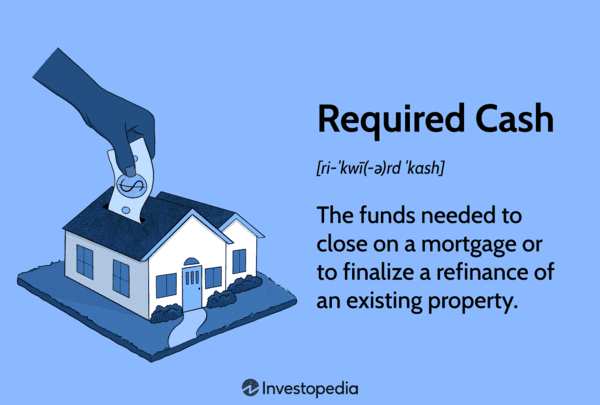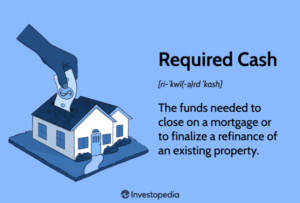Title: A Comprehensive Guide to Navigating Home Loan Refinancing Costs
Introduction
Being a homeowner is a tremendous life achievement, but it frequently requires a considerable financial investment. For many property owners, obtaining a mortgage is a necessary step in realizing their housing aspirations. However, as conditions change over time, interest rates also do. Home loan refinancing might be useful in this situation.
Your house loan refinancing may be a wise financial decision that will ultimately save you money. However, it is crucial to comprehend the related costs and advantages, just as with any financial transaction. We will dig into the realm of house loan refinancing fees in this thorough guide, assisting you in making decisions regarding your financial future.
Comprehending Refinancing of Home Loans
Let’s make sure we grasp what refinancing a house loan includes before we go into the charges involved. Refinancing a home loan generally means switching out your current mortgage for a new one, sometimes to get better terms or cheaper interest rates. The main objective is to lower monthly payments, pay less interest overall, or obtain cash by using the equity in your property.
Here are a few typical explanations why house owners think about refinancing:
Lower Interest Rates: Refinancing might result in a lower interest rate on your mortgage when market interest rates decline, which will lower your monthly payments.
Loan Term modify: You can refinance to modify the loan term, such as switching from a 30-year to a 15-year mortgage, which may result in higher monthly payments but lower overall interest rates.
With a cash-out refinance, you can borrow more than your outstanding mortgage balance and use the extra money for home upgrades, debt relief, or other financial requirements.
Changing Loan Type: To stabilize your interest rate, you can change from an adjustable-rate mortgage (ARM) to a fixed-rate mortgage (FRM) or vice versa.
The Price of Refinancing a Mortgage
Although refinancing has obvious advantages, it’s important to comprehend the expenses before making a decision. Refinancing a mortgage often entails a number of costs that might pile up. The following are the main expenses to take into account:
Closing expenses are associated with refinancing, just like they were when you first bought your house. Application fees, appraisal fees, title search and insurance, attorney fees, and other expenses are included in these prices. Closing expenses typically represent 2% to 5% of the loan amount.
Origination Fees: In order to complete your loan application, your new lender may demand an origination fee. This charge usually represents a percentage of the loan amount.
Points: Lenders could let you purchase discount points to cut your interest rate. If you want to live in your property for a considerable length of time, paying the 1% of the loan amount every point might be beneficial.
Prepayment Penalties: Look through your current loan contract to see if there are any prepayment penalties. If you refinance, keep in mind that certain loans charge penalties if you pay off your mortgage early.
Fees for Credit Reports and Applications: When completing a loan application and obtaining your credit report, lenders frequently demand fees.
Home assessment: A home assessment may be necessary to ascertain the current worth of your house. Depending on where you live and how big your house is, this cost may change.
Recording fees: You might have to fork over money for the new mortgage to be recorded with your local government.
Rate Lock Fees: Some lenders charge a fee for this service if you wish to lock in a certain interest rate.
Comparing the Costs and Benefits
It’s important to balance these costs against the possible advantages of house loan refinancing now that we’ve discussed the various charges involved. Here’s how to determine whether or not refinancing makes sense for you financially:
How to Determine Your Break-Even Point: Calculate how long it will take for your lower monthly payments to cover the costs of refinancing. To calculate your break-even threshold, divide the total closing expenses by the amount you save each month. Refinancing could be wise if you want to live in your house after this.
Think About Your Long-Term Objectives Consider your long-term financial objectives. Getting a cheaper interest rate might save you a lot of money over the long run if you want to live in your house for a long period.
Check Your Credit Score: Securing a favourable refinancing deal depends heavily on your credit score. You can be eligible for higher rates if your credit score has increased since you first applied for your mortgage.
Analyse Current Interest Rates: Pay attention to the environment of current interest rates. If rates have drastically decreased since you initially obtained your mortgage, this could be a great opportunity to refinance.
Examine your current loan: Look over the conditions of your present mortgage very carefully. Are you ready to have your adjustable-rate mortgage (ARM) reset to a higher rate? If so, switching to a fixed-rate mortgage might offer security.
Analyze Your house Equity: If you have accumulated a sizable amount of equity in your house, a cash-out refinance may be able to help you pay off debt or fund home upgrades.
Speak to Several Lenders: Refrain from accepting the first offer you are presented with. To get the greatest price, shop around and compare loan offers from other lenders.
Non-Traditional Refinancing Options
There are other solutions to take into account if the upfront fees of refinancing seem daunting:
Rate Modification: You may modify the conditions of your current mortgage through certain lenders’ rate modification programmed without going through the entire refinancing procedure. This may be a more economical method of obtaining a reduced interest rate.
Loan Assumption: If your present mortgage is transferable to a suitable buyer, they will be able to take over your loan and its conditions. This is possible if your mortgage is assumable.
house Equity Line of Credit (HELOC): As an alternative to refinancing, you can think about obtaining a HELOC, which enables you to borrow money against the equity in your house while maintaining your current mortgage.
Concusion
Refinancing your mortgage may be an effective tool for handling your finances and reaching your long-term objectives. But it’s essential to approach this choice knowing exactly what the expenses are and how they relate to your goals.
You may choose a loan option that best fits your financial circumstances by carefully analysing your present mortgage, contrasting loan offers, and figuring out your break-even point. Although refinancing fees are an important factor, keep in mind that in the long term, possible savings and advantages may surpass these costs, providing you and your family with a more secure and comfortable financial future.

